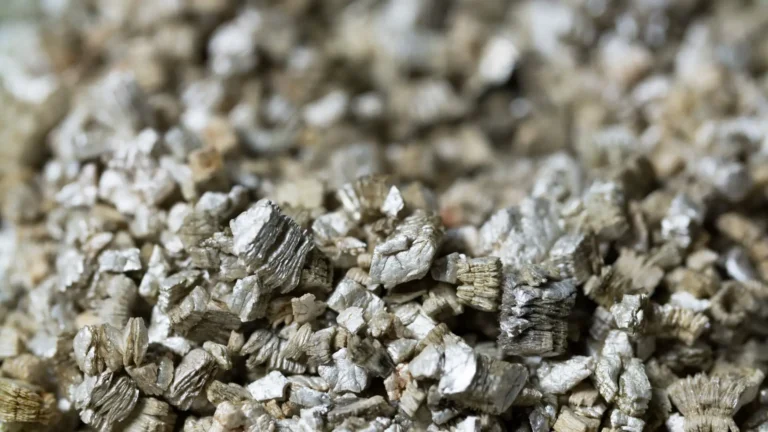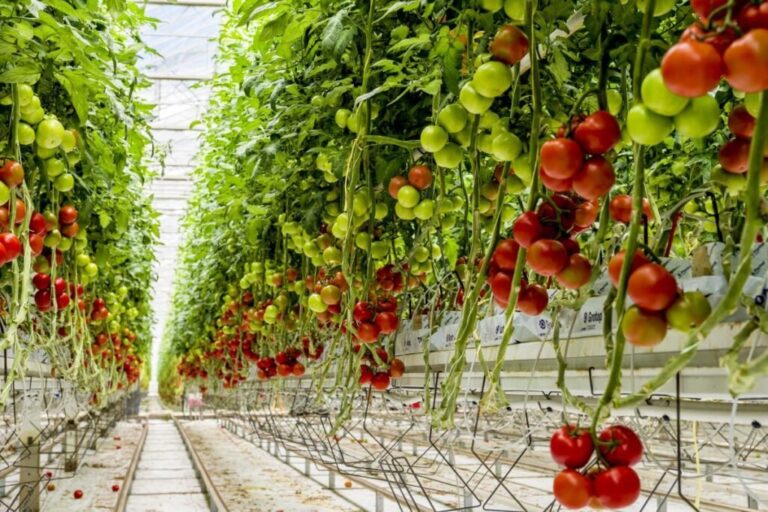NFT (Nutrient Film Technique) in Hydroponics Explained
Table of Contents
Understanding the Nutrient Film Technique (NFT) in Hydroponics
The Nutrient Film Technique (NFT) is a popular hydroponic system that allows plants to grow in a continuous flow of nutrient-rich solution. This method involves the use of a thin film of nutrient solution that runs along a sloping channel, providing the roots of the plants with a constant supply of water, oxygen, and essential nutrients. Unlike other hydroponic systems, the NFT system does not use any growing medium. Instead, the plants are suspended in plastic troughs or channels, with their roots exposed to the nutrient film.
One of the key components of the NFT system is the sloping channel or trough, which is typically made of PVC or another durable material. The channel is set at a slight incline, allowing the nutrient solution to flow from one end to the other, creating a thin film. The roots of the plants are positioned in small holes or slots in the channel, allowing them to access the nutrient film. As the solution flows across the roots, it provides them with the necessary nutrients while also ensuring they receive oxygen. This constant supply of water, nutrients, and oxygen promotes healthy plant growth and allows for maximum nutrient uptake. The NFT system is particularly suited for growing leafy greens and herbs, as it provides optimal conditions for their development.
• The Nutrient Film Technique (NFT) is a hydroponic system that uses a continuous flow of nutrient-rich solution.
• This method does not require any growing medium, as the plants are suspended in plastic troughs or channels.
• The sloping channel or trough is made of durable materials like PVC and allows for the flow of a thin film of nutrient solution.
• The roots of the plants are positioned in small holes or slots in the channel, allowing them to access the nutrient film.
• As the solution flows across the roots, it provides them with water, oxygen, and essential nutrients for healthy growth.
• The NFT system is ideal for growing leafy greens and herbs due to its ability to provide optimal conditions for their development.
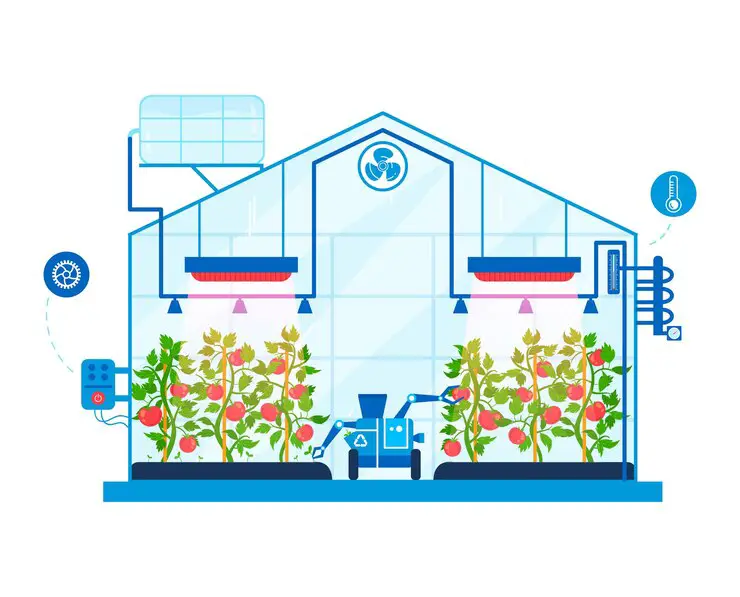
The Basics of Hydroponics and its Advantages
Hydroponics is a revolutionary gardening method that involves growing plants without soil. Instead, plants are grown in a nutrient-rich water solution, allowing them to directly absorb the essential nutrients they need for growth. This method offers several advantages over traditional soil-based gardening.
One of the key advantages of hydroponics is its ability to save water. Compared to traditional agriculture, hydroponics uses up to 90% less water. This is because water in a hydroponic system is recirculated and reused, minimizing water waste. Additionally, since the plants are grown in a controlled environment, the risk of water evaporation is significantly reduced.
Another advantage of hydroponics is the ability to grow plants in small spaces. By eliminating the need for soil, hydroponics systems can be set up in urban environments, rooftops, or even indoors. This allows people with limited garden space to still enjoy gardening and grow their own fresh produce. Additionally, the controlled environment in which hydroponics operates ensures that plants receive the optimal amount of light, water, and nutrients, resulting in faster growth and higher yields.
In conclusion, hydroponics is a highly efficient and sustainable method of gardening that offers numerous advantages over traditional soil-based farming. Its water-saving capabilities and ability to utilize small spaces make it an ideal option for urban gardening. With the right knowledge and equipment, anyone can enjoy the benefits of hydroponics and grow their own healthy and delicious plants.
• Hydroponics is a gardening method that involves growing plants without soil
• Plants are grown in a nutrient-rich water solution, allowing them to directly absorb essential nutrients
• Hydroponics saves up to 90% water compared to traditional agriculture
• Water in hydroponic systems is recirculated and reused, minimizing waste
• Controlled environment reduces the risk of water evaporation
• Hydroponics allows for gardening in small spaces such as urban environments or indoors
• Eliminating the need for soil makes hydroponics adaptable to rooftops and limited garden space
• Controlled environment ensures optimal light, water, and nutrient levels for faster growth and higher yields.
Hydroponics is an efficient and sustainable method with numerous advantages over traditional farming.
Exploring Different Hydroponic Systems
Hydroponics offers a wide range of systems for cultivating plants without soil, each with its own unique advantages and considerations. One popular option is the Nutrient Film Technique (NFT) system, known for its simplicity and efficient use of resources. In this system, a thin film of nutrient-rich water flows continuously over the roots of the plants, providing them with a steady supply of water, oxygen, and nutrients.
Another commonly used hydroponic system is the Deep Water Culture (DWC) system, where plants are suspended above a reservoir of nutrient solution, with their roots submerged in the water. This system allows for maximum oxygenation of the roots and promotes rapid growth. A similar system is the Aeroponics system, where plant roots are exposed to a mist of nutrient solution, providing them with ample oxygen and nutrients.
Additionally, the Ebb and Flow (or Flood and Drain) system is another popular choice, where plants are grown in containers filled with a growing medium. The nutrient solution is periodically flooded into the containers and then drained away, allowing for oxygenation of the roots. This system offers flexibility in terms of container size and is suitable for a variety of plant types.
When choosing the right hydroponic system for your needs, it’s important to consider factors such as the type of plants you want to grow, available space, budget, and level of expertise. Each system has its own set of requirements and considerations, so it’s essential to thoroughly research and understand the pros and cons of each before making a decision. By exploring different hydroponic systems, you can find the one that best suits your goals and resources, ultimately leading to successful and satisfying cultivation.
• Nutrient Film Technique (NFT) system:
– Simple and efficient use of resources
– Thin film of nutrient-rich water flows continuously over roots
– Provides steady supply of water, oxygen, and nutrients
• Deep Water Culture (DWC) system:
– Plants suspended above reservoir of nutrient solution
– Roots submerged in water for maximum oxygenation
– Promotes rapid growth
• Aeroponics system:
– Plant roots exposed to mist of nutrient solution
– Provides ample oxygen and nutrients
• Ebb and Flow (or Flood and Drain) system:
– Plants grown in containers with growing medium
– Nutrient solution periodically flooded into containers and drained away for root oxygenation
– Offers flexibility in container size and suitable for various plant types
When choosing a hydroponic system, consider factors such as:
– Type of plants you want to grow
– Available space
– Budget
– Level of expertise
Thoroughly research pros and cons before making a decision. Exploring different hydroponic systems will help you find the one that best suits your goals and resources, leading to successful cultivation.
Introducing the NFT System and its Key Components
The Nutrient Film Technique (NFT) is a highly efficient hydroponic system that is widely used in modern agriculture. Unlike other hydroponic techniques, the NFT system relies on a continuous flow of a thin film of nutrient-rich solution over the roots of the plants. By delivering a constant supply of nutrients and oxygen to the roots, this system helps plants grow quickly and vigorously.
The key components of an NFT system include a sloping channel or trough where plants are positioned, a nutrient reservoir, a pump to circulate the nutrient solution, and a drain back to the reservoir. The channel is usually made of PVC or other durable materials and is lined with a thin film of water that contains the necessary nutrients for the plants. The plants are placed in small pots or grow cups with their roots exposed to the nutrient solution, allowing them to take up the water and nutrients they need. The excess solution flows back to the reservoir, where it is recirculated through the system.
Overall, the NFT system offers several advantages for hydroponic cultivation. It promotes efficient nutrient uptake, as the constant flow of solution ensures that plants receive a steady supply of essential elements. Additionally, the NFT system allows for better aeration of the roots compared to other hydroponic methods, which can help prevent oxygen deprivation and root rot. This system also minimizes water and nutrient wastage, making it a sustainable and cost-effective option for both commercial and home-based hydroponic gardening.
• The Nutrient Film Technique (NFT) is a highly efficient hydroponic system
• Relies on a continuous flow of nutrient-rich solution over plant roots
• Provides constant supply of nutrients and oxygen for fast and vigorous plant growth
• Key components include sloping channel, nutrient reservoir, pump, and drain back to reservoir
• Channel made of durable materials lined with thin film of water containing necessary nutrients
• Plants placed in pots or grow cups with exposed roots for uptake of water and nutrients
• Excess solution flows back to reservoir for recirculation through the system
Advantages of NFT System:
– Efficient nutrient uptake due to steady supply of essential elements.
– Better aeration of roots compared to other hydroponic methods.
– Helps prevent oxygen deprivation and root rot.
– Minimizes water and nutrient wastage.
– Sustainable and cost-effective option for commercial and home-based hydroponic gardening.
The Science Behind the Nutrient Film Technique
The Nutrient Film Technique (NFT) is a hydroponic system that employs a thin film of nutrient-rich water flowing continuously over the roots of plants. This technique is based on the principle of delivering nutrients directly to the roots, promoting efficient absorption and maximizing plant growth. The science behind the Nutrient Film Technique lies in the concept of creating a thin film of water that provides a steady supply of oxygen, water, and nutrients to the roots, avoiding waterlogging and ensuring optimal root health.
In NFT systems, a slight slope is created to allow the nutrient solution to flow in a thin film, typically between 1-3 millimeters deep, along a channel or gutter. The roots of the plants are suspended above the film, constantly bathed in a nutrient-rich solution. Through capillary action and the hydrophilic nature of the growing medium, the roots absorb the required nutrients, oxygen, and water. The film of nutrient solution also acts as a buffer against temperature fluctuations and can help regulate the pH level around the roots, creating an ideal environment for nutrient uptake. Overall, the science behind the Nutrient Film Technique ensures that plants receive a constant and optimized supply of essential elements, leading to healthy growth and high productivity.
• The Nutrient Film Technique (NFT) is a hydroponic system that delivers nutrients directly to the roots of plants.
• NFT creates a thin film of nutrient-rich water that flows continuously over the roots, ensuring efficient absorption and maximizing plant growth.
• The science behind NFT lies in creating a steady supply of oxygen, water, and nutrients to the roots without causing waterlogging.
• In NFT systems, a slight slope is created to allow for the flow of a thin film of nutrient solution along a channel or gutter.
• The roots are suspended above the film and absorb nutrients through capillary action and the hydrophilic nature of the growing medium.
• The film of nutrient solution acts as a buffer against temperature fluctuations and helps regulate pH levels around the roots for optimal nutrient uptake.
• Overall, NFT ensures that plants receive constant and optimized supply of essential elements, leading to healthy growth and high productivity.
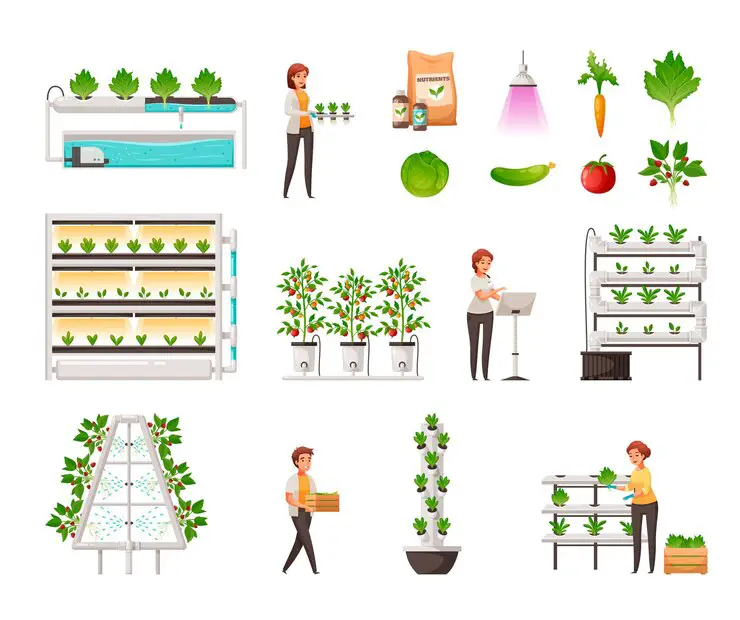
How Does the NFT System Work in Hydroponics?
The Nutrient Film Technique (NFT) system, a popular hydroponic method, works by continuously flowing a thin film of nutrient solution over the plant roots. This technique utilizes a sloping channel or trough, with the nutrient solution pumped into the higher end and allowed to flow down the channel, creating a thin film that nourishes the roots. As the nutrient solution flows over the roots, it oxygenates them and provides the necessary nutrients for growth and development. The roots are suspended in the air, receiving both moisture and nutrients at precisely the right amounts. This is achieved by controlling the flow rate of the solution, ensuring it is just enough to cover the roots without drowning them.
One key benefit of the NFT system is that it maximizes oxygen supply to the roots. Since the roots are exposed to the air, they can access abundant oxygen, essential for their growth and metabolism. Additionally, this technique eliminates the need for any growing medium, such as soil or coconut coir, as the plants’ roots are suspended in the nutrient-rich film. This allows for increased space efficiency and makes it easier to control the nutrient balance. The NFT system is particularly advantageous for quick-growing crops with a shallow root system, such as lettuce, herbs, and greens. However, it may not be suitable for plants with extensive root systems or those that require a more substantial medium for support.
• The NFT system continuously flows a thin film of nutrient solution over the plant roots.
• A sloping channel or trough is used to create the flow of the nutrient solution.
• The nutrient solution is pumped into the higher end of the channel and allowed to flow down, nourishing the roots as it passes over them.
• This technique oxygenates the roots and provides necessary nutrients for growth and development.
• The roots are suspended in the air, receiving moisture and nutrients at precise amounts without drowning.
• Controlling the flow rate ensures that the roots are covered with just enough solution.
Benefits:
– Maximizes oxygen supply to roots
– Eliminates need for growing medium
– Increases space efficiency
– Easier to control nutrient balance
Suitability:
– Ideal for quick-growing crops with shallow root systems (lettuce, herbs, greens)
– Not suitable for plants with extensive root systems or those needing substantial support.
Setting Up an NFT System: Step-by-Step Guide
Setting up an NFT system is a straightforward process that requires careful attention to detail to ensure optimal functionality. Here is a step-by-step guide to help you get started on creating your own NFT system:
Step 1: Choose the Right Location – Find a suitable location for your NFT system that receives ample light and provides a controlled environment. Consider factors such as temperature, humidity, and ventilation to create the ideal conditions for your plants.
Step 2: Select the NFT Channels – Determine the number and size of NFT channels based on the space available and the type of plants you wish to grow. NFT channels are typically made of PVC pipes or channels with a slight downward slope to allow for the flow of nutrient-rich water.
Step 3: Install the Channels – Set up the NFT channels in a stable and level position, ensuring that they are securely fixed in place. Connect the channels to a nutrient reservoir using a water pump or gravity flow system, ensuring a seamless flow of nutrient solution.
Step 4: Construct the Support Structure – Build a sturdy support structure for your NFT channels, ensuring that they are evenly spaced and properly supported. This will prevent any sagging or warping of the channels, providing a stable platform for your plants to thrive.
Step 5: Install the Irrigation System – Depending on your setup, choose between a continuous flow or periodic flood system. Ensure that the nutrient solution flows evenly along the channels, bathing the roots of the plants with a thin film of nutrient-rich water.
Step 6: Add the Growing Medium – Place the net pots filled with a suitable growing medium, such as expanded clay pebbles or rockwool cubes, into the top of the NFT channels. This will provide support for the plants and allow their roots to access the nutrient solution flowing through the channels.
Step 7: Start Nutrient Delivery – Once the system is set up, start delivering the nutrient solution to your plants. Monitor the pH and electrical conductivity (EC) levels regularly to maintain a healthy balance. Adjust the nutrient solution as necessary to meet the specific needs of your plants.
By following these steps, you can successfully set up an NFT system and begin your journey into hydroponic gardening. Remember to regularly monitor and maintain the system to ensure optimal performance and a thriving crop.
• Choose the Right Location – Find a suitable location for your NFT system that receives ample light and provides a controlled environment. Consider factors such as temperature, humidity, and ventilation to create the ideal conditions for your plants.
• Select the NFT Channels – Determine the number and size of NFT channels based on the space available and the type of plants you wish to grow. NFT channels are typically made of PVC pipes or channels with a slight downward slope to allow for the flow of nutrient-rich water.
• Install the Channels – Set up the NFT channels in a stable and level position, ensuring that they are securely fixed in place. Connect the channels to a nutrient reservoir using a water pump or gravity flow system, ensuring a seamless flow of nutrient solution.
• Construct the Support Structure – Build a sturdy support structure for your NFT channels, ensuring that they are evenly spaced and properly supported. This will prevent any sagging or warping of the channels, providing a stable platform for your plants to thrive.
• Install the Irrigation System – Depending on your setup, choose between a continuous flow or periodic flood system. Ensure that the nutrient solution flows evenly along t
he channels, bathing
the roots
of
the plants with
a thin film
of
nutrient-rich water.
• Add
the Growing Medium –
Place
the net pots filled with
a suitable growing medium,
such as expanded clay pebbles or rockwool cubes,
into
the top
of
the NFT
channels.
This will provide support
for
the plants
and allow their roots
to access
th e
nutrient solution flowing through
t he
channels.
– Start Nutrient Delivery –
Once
th e
system is set up,
start delivering
th e
nutrient solution
to
your plants.
– Monitor pH and EC Levels –
Monitor
th e
pH
and
electrical conductivity (EC) levels regularly to maintain a healthy balance. Adjust th e nutrient solution as necessary to meet the specific needs of your plants.
Regularly Maintain and Monitor the System – Remember to regularly monitor and maintain the system to ensure optimal performance and a thriving crop. This includes checking for any clogs or blockages in th e channels, adjusting th e nutrient solution as needed, and ensuring proper light exposure and environmental conditions for your plants.
Key Factors to Consider for Successful NFT Hydroponic Cultivation
When it comes to successful NFT hydroponic cultivation, there are several key factors that growers need to consider. Firstly, maintaining the proper nutrient solution is essential. The nutrient film technique relies on a thin film of nutrient-rich water flowing over the roots of the plants, providing them with the necessary nutrients. It is crucial to regularly check and adjust the nutrient solution to ensure that the plants are receiving the right balance of essential elements for optimal growth.
Another important factor is maintaining the proper pH and EC levels in the NFT system. pH refers to the acidity or alkalinity of the nutrient solution, while EC is a measure of its electrical conductivity, which indicates the concentration of dissolved salts. It is essential to monitor and adjust these levels regularly as they directly affect the plant’s ability to absorb nutrients effectively. Incorrect pH or EC levels can lead to nutrient deficiencies or toxicities and hinder plant growth. Regularly testing the solution and making necessary adjustments will help ensure the success of NFT hydroponic cultivation.
In addition to nutrient and pH management, careful attention should be given to the overall environment in which the NFT system operates. Factors such as temperature, humidity, and airflow can significantly impact plant health and growth. Maintaining stable and optimal conditions within the growing area will help prevent pest and disease issues, optimize nutrient uptake, and promote healthy plant development. Therefore, growers need to carefully monitor and adjust environmental variables to create an ideal growing environment for their NFT hydroponic system.
• Maintaining the proper nutrient solution is essential for successful NFT hydroponic cultivation.
• Regularly check and adjust the nutrient solution to ensure plants receive the right balance of essential elements.
• pH and EC levels in the NFT system should be monitored and adjusted regularly.
• pH refers to acidity or alkalinity, while EC measures electrical conductivity of the nutrient solution.
• Incorrect pH or EC levels can lead to nutrient deficiencies or toxicities and hinder plant growth.
• Testing the solution regularly and making necessary adjustments is crucial for success.
• Careful attention should be given to the overall environment in which the NFT system operates.
• Factors such as temperature, humidity, and airflow can significantly impact plant health and growth.
• Maintaining stable conditions within the growing area helps prevent pest and disease issues.
• Optimal environmental conditions promote healthy plant development.
here are some key factors to consider for successful NFT hydroponic cultivation:
| Factor | Description |
|---|---|
| Gradient | The angle at which the trough is placed is very important to the way that the nutrient solution flows. Normally the slope is created during the set up of the system by placing the channels in a framework or on benches . |
| Temperature | The temperature of the nutrient solution should be maintained between 65°F and 75°F for optimal growth . |
| Nutrient Solution | The nutrient solution should be pH balanced and contain the appropriate amount of nutrients for the plants being grown. It is important to monitor the pH and nutrient levels regularly to ensure that they remain within the desired range . |
| Lighting | Plants require adequate light to grow and produce fruit. LED grow lights are a popular choice for hydroponic growers as they are energy efficient and provide the full spectrum of light required for plant growth . |
| Growing Medium | A growing medium is not required for NFT hydroponic systems as the plants are grown directly in the nutrient solution. However, some growers choose to use a growing medium such as rockwool cubes to provide additional support for the plants . |
Nutrient Solutions for NFT Systems: What You Need to Know
When it comes to nutrient solutions for NFT systems, it is crucial to understand the specific needs of your plants. NFT hydroponics relies on a thin film of nutrient-rich water flowing over the plant roots, ensuring their consistent supply of essential nutrients. The nutrient solution used in NFT systems should be well-balanced and tailored to the specific requirements of the crops being grown.
A balanced nutrient solution for NFT systems typically includes a mix of macronutrients such as nitrogen, phosphorus, and potassium, as well as essential micronutrients like calcium, magnesium, and iron. It is vital to maintain the appropriate ratios of these nutrients to support optimal plant growth and development. Additionally, the pH level of the nutrient solution plays a crucial role in nutrient availability. Most crops grown in NFT systems thrive in a slightly acidic to neutral pH range, typically around 5.5 to 6.5. Regular monitoring and adjustment of the pH level is necessary to ensure efficient nutrient uptake and avoid nutrient deficiencies or toxicities.
To achieve the right nutrient balance in an NFT system, many gardeners choose to use pre-mixed hydroponic nutrient solutions available on the market. These solutions are formulated with the proper ratios of nutrients already calculated, taking the guesswork out of nutrient management. However, some experienced gardeners prefer to customize their nutrient solutions based on the specific needs of their crops. Conducting regular water and leaf tissue analysis can help identify any potential nutrient imbalances, enabling the adjustments necessary for optimal plant health and growth.
• NFT hydroponics relies on a thin film of nutrient-rich water flowing over plant roots
• Nutrient solution should be well-balanced and tailored to specific crop requirements
• Balanced nutrient solution includes macronutrients and micronutrients
• Macronutrients include nitrogen, phosphorus, and potassium
• Micronutrients include calcium, magnesium, and iron
• Maintaining appropriate ratios of nutrients is crucial for optimal growth and development
• pH level of nutrient solution affects nutrient availability
• Most crops grown in NFT systems thrive in slightly acidic to neutral pH range (5.5-6.5)
• Regular monitoring and adjustment of pH level necessary for efficient nutrient uptake
• Pre-mixed hydroponic nutrient solutions available on the market offer convenience
• Formulated with proper ratios of nutrients already calculated
• Customizing nutrient solutions based on specific needs can be done by experienced gardeners
• Conducting regular water and leaf tissue analysis helps identify potential imbalances
• Allows adjustments necessary for optimal plant health.
Optimizing Nutrient Delivery in the NFT System
To achieve optimal nutrient delivery in the NFT system, several key factors should be considered. Firstly, it is essential to ensure that the nutrient solution is properly balanced and contains all the necessary elements for plant growth. This includes macronutrients such as nitrogen, phosphorus, and potassium, as well as micronutrients like iron, zinc, and manganese. Regular monitoring and adjustment of the nutrient solution’s pH and electrical conductivity (EC) levels are crucial to maintain an ideal growing environment for the plants.
Another important aspect of optimizing nutrient delivery in the NFT system is the management of the flow rate. The nutrient film should be maintained at an appropriate thickness to ensure sufficient nutrient uptake by the plants’ roots. A higher flow rate may lead to inadequate root contact with the nutrient solution, while a lower flow rate can result in stagnant conditions and nutrient deficiencies. Regular checks and adjustments to the flow rate are necessary to ensure a consistent and optimal nutrient supply to the plants.
Additionally, proper maintenance of the system’s components is vital for efficient nutrient delivery in the NFT system. Regular cleaning of the channels and filters is necessary to prevent clogging and ensure a continuous flow of the nutrient solution. Inspecting and repairing any leaks or blockages promptly will help avoid disruptions to nutrient delivery. By diligently monitoring and maintaining these factors, gardeners can optimize nutrient delivery in the NFT system, promoting healthy plant growth and maximizing crop yields.
• Ensure the nutrient solution is properly balanced with necessary elements
• Monitor and adjust pH and EC levels regularly for ideal growing environment
• Manage flow rate to maintain appropriate thickness of nutrient film
• Regularly check and adjust flow rate to ensure consistent nutrient supply
• Maintain system components through regular cleaning and inspection
• Repair any leaks or blockages promptly to avoid disruptions in delivery
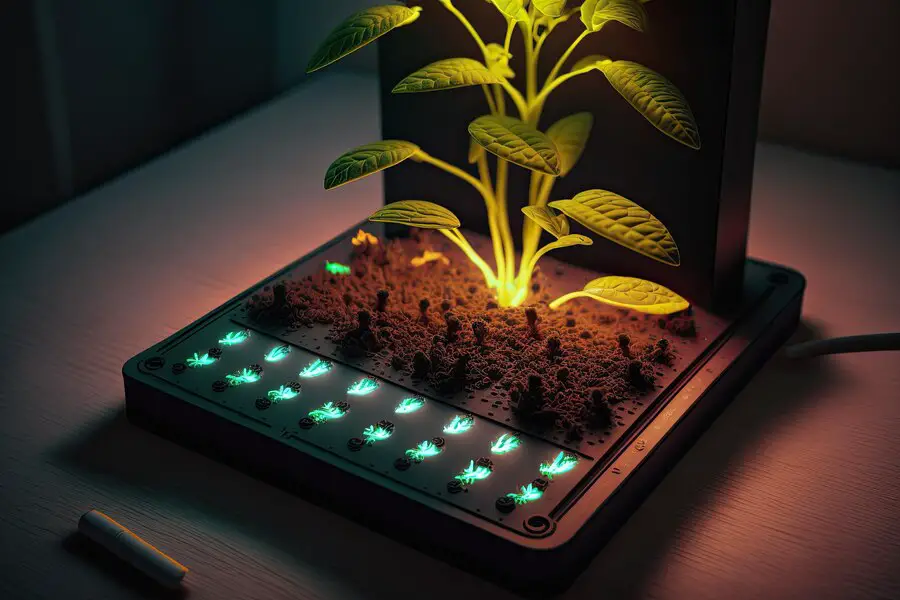
Managing pH and EC Levels in NFT Hydroponics
Maintaining the optimal pH and EC levels is crucial for successful nutrient film technique (NFT) hydroponics. pH refers to the acidity or alkalinity of the nutrient solution, while EC, or electrical conductivity, measures the concentration of dissolved ions in the solution. By carefully monitoring and adjusting these levels, growers can ensure that their plants receive the necessary nutrients, promote nutrient uptake, and avoid nutrient imbalances or deficiencies.
To manage pH levels in NFT hydroponics, it is important to start with a well-balanced nutrient solution. The pH range typically recommended for NFT systems is between 5.5 and 6.5, which is slightly acidic to neutral. Regular monitoring of the pH is essential, as it can fluctuate depending on various factors such as nutrient uptake, evaporation, or water quality. To adjust the pH, pH-adjusting solutions or chemicals can be used, such as pH up (to increase pH) or pH down (to decrease pH). Gradual changes should be made, allowing the plants to adapt gradually and avoiding sudden pH swings. It is also important to note that different plant species may have varying pH preferences, so it is advisable to consult specific crop guidelines for optimal pH levels.
In terms of managing EC levels, it is important to understand the nutrient requirements of the plants being grown. EC levels indicate the strength of the nutrient solution, as higher EC values indicate higher nutrient concentrations. Monitoring EC levels allows growers to fine-tune nutrient uptake, minimize the risk of nutrient imbalances or toxicities, and optimize plant growth. Utilizing a reliable EC meter, growers can regularly measure and adjust the strength of their nutrient solution as needed. Adjustments can be made by either diluting the solution with water or adding more concentrated nutrient solutions to increase the EC. As with pH, it is important to follow crop-specific recommendations and regularly test and adjust the nutrient solution to maintain optimal EC levels for healthy plant growth in NFT hydroponics.
• Regularly monitor and adjust pH levels in NFT hydroponics
• Start with a well-balanced nutrient solution
• Recommended pH range is between 5.5 and 6.5
• Use pH-adjusting solutions or chemicals to adjust the pH gradually
• Different plant species may have varying pH preferences, so consult crop guidelines
• Understand the nutrient requirements of the plants being grown for managing EC levels
• EC levels indicate the strength of the nutrient solution
• Higher EC values indicate higher nutrient concentrations
• Utilize a reliable EC meter to measure and adjust the strength of the nutrient solution regularly
• Adjustments can be made by diluting with water or adding more concentrated nutrients
• Follow crop-specific recommendations for optimal EC levels
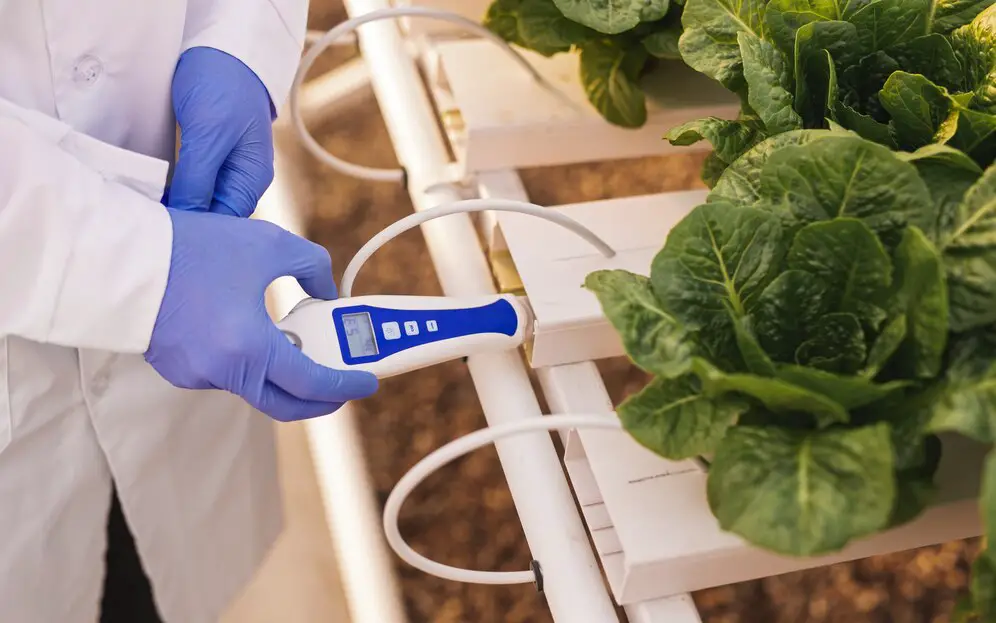
Preventing and Addressing Common NFT System Issues
Common issues can arise when using the Nutrient Film Technique (NFT) system in hydroponics, but with proper preventative measures and prompt addressing, these problems can be minimized or eliminated. One common issue encountered in NFT systems is clogging of the nutrient film channels. This can be caused by organic matter, algae growth, or sediment accumulation. Regular inspection and cleaning of the channel system is essential to prevent clogging. Using a suitable filtration system, such as screens or filters, can also help to prevent solids from entering the channels and causing blockages.
Another issue that may arise in NFT systems is nutrient imbalances. Nutrient imbalances can occur when the concentration of specific nutrients in the nutrient solution becomes too high or too low. These imbalances can lead to stunted growth, nutrient deficiencies, or toxicity in plants. Monitoring the nutrient solution regularly through frequent testing of pH and electrical conductivity (EC) levels is important to ensure that the proper nutrient balance is maintained. Adjustments can be made by adding or diluting the nutrient solution as needed to achieve optimal nutrient levels for plant growth.
By being proactive in preventing and addressing these common issues, NFT system users can optimize their hydroponic cultivation and ensure healthy and productive crops. Regular maintenance and monitoring, along with prompt action, are key to keeping the NFT system running smoothly and maximizing plant growth and yield. However, it’s also important to note that each specific NFT system setup may present its own unique challenges, so users should consult with experienced hydroponics professionals and agronomists for tailored advice and solutions.
• Regular inspection and cleaning of the channel system is essential to prevent clogging caused by organic matter, algae growth, or sediment accumulation.
• Using a suitable filtration system, such as screens or filters, can help prevent solids from entering the channels and causing blockages.
• Nutrient imbalances can lead to stunted growth, nutrient deficiencies, or toxicity in plants.
• Monitoring the nutrient solution regularly through frequent testing of pH and electrical conductivity (EC) levels is important to maintain proper nutrient balance.
• Adjustments can be made by adding or diluting the nutrient solution as needed to achieve optimal nutrient levels for plant growth.
• Being proactive in preventing and addressing common issues will optimize hydroponic cultivation and ensure healthy and productive crops.
• Regular maintenance and monitoring are key to keeping the NFT system running smoothly and maximizing plant growth and yield.
• Consult with experienced hydroponics professionals and agronomists for tailored advice on specific NFT system setups.
Achieving Efficient Nutrient Uptake in NFT Hydroponics
Efficient nutrient uptake is essential for the success of any hydroponic system, including the Nutrient Film Technique (NFT). In NFT hydroponics, the nutrient solution flows continuously over the roots of the plants, creating a thin film or layer that provides the necessary nutrients. However, to achieve optimal nutrient uptake in NFT, several factors need to be considered and managed.
One of the key factors in achieving efficient nutrient uptake in NFT hydroponics is maintaining the proper pH and electrical conductivity (EC) levels of the nutrient solution. pH refers to the acidity or alkalinity of the solution, while EC measures its overall nutrient concentration. By monitoring and adjusting these levels regularly, growers can ensure that the nutrient solution remains within the optimal range for nutrient uptake by the plants. This can be done using pH and EC meters or by employing automated systems that continuously monitor and adjust the solution’s parameters.
Additionally, proper nutrient balance is crucial for efficient uptake in NFT hydroponics. The nutrient solution needs to contain the right proportions of essential macro and micronutrients required for plant growth. These nutrients include nitrogen, phosphorus, potassium, calcium, magnesium, and trace elements. Monitoring the nutrient levels and conducting regular tests can help growers identify any deficiencies or imbalances and make necessary adjustments to optimize nutrient uptake.
Another factor to consider is the temperature of the nutrient solution. The ideal temperature range for efficient nutrient uptake in NFT hydroponics is generally between 65°F to 75°F (18°C to 24°C). Extremes in temperature can affect the uptake rates of nutrients and potentially harm plant roots. Maintaining a consistent and optimal temperature through the use of water chilling or heating systems can help ensure efficient nutrient uptake.
In conclusion, achieving efficient nutrient uptake in NFT hydroponics requires attention to several key factors: maintaining proper pH and EC levels, ensuring a balanced nutrient solution, and controlling the temperature of the nutrient solution. By carefully managing these factors, growers can enhance nutrient absorption and support healthy plant growth in their NFT systems.
• Maintaining proper pH and electrical conductivity (EC) levels of the nutrient solution
• Monitoring and adjusting pH and EC levels regularly using meters or automated systems
• Ensuring a balanced nutrient solution with the right proportions of essential macro and micronutrients
• Conducting regular tests to identify deficiencies or imbalances in nutrient levels
• Optimizing nutrient uptake by making necessary adjustments based on test results
• Controlling the temperature of the nutrient solution within the ideal range of 65°F to 75°F (18°C to 24°C)
• Using water chilling or heating systems to maintain a consistent and optimal temperature for efficient nutrient uptake.
Maximizing Crop Yield and Quality with NFT Systems
To maximize crop yield and quality with NFT systems, several important factors must be considered. First and foremost is the selection of appropriate plant varieties that are suitable for hydroponic cultivation. Certain crops, such as leafy greens and herbs, thrive in NFT systems due to the continuous nutrient flow provided. Additionally, maintaining optimal environmental conditions is crucial. This includes controlling temperature, humidity, and light intensity to ensure that plants are not subjected to excessive stress.
Another key aspect is the careful monitoring and management of nutrient solutions in the NFT system. Regular testing of the nutrient solution’s pH and electrical conductivity (EC) levels is essential to ensure plants are receiving the necessary nutrients in the correct proportions. Adjustments can then be made accordingly to maintain ideal growing conditions. It is worth noting that specific nutrient requirements may vary depending on the crop being cultivated, so it is important to consult reliable resources or seek advice from experts to tailor the nutrient solution to the needs of the plants.
In addition to nutrient management, ensuring proper spacing and spacing intervals between plants is crucial. This allows for sufficient root space and prevents overcrowding, which can impede nutrient uptake and airflow. Regular inspection and maintenance of the NFT system’s components, such as the channels, pumps, and filters, are also essential to prevent clogs and ensure smooth nutrient flow.
By adopting these practices and taking a proactive approach to monitoring and adjusting environmental factors and nutrient solutions, gardeners can maximize crop yield and quality in NFT systems. As with any cultivation method, it is important to stay informed, continue learning, and adapt techniques as needed to optimize results. With careful attention and dedication, the potential for success in NFT hydroponics is vast.
• Select appropriate plant varieties suitable for hydroponic cultivation
• Maintain optimal environmental conditions including temperature, humidity, and light intensity
• Regularly test and manage nutrient solutions’ pH and electrical conductivity levels
• Adjust nutrient solutions accordingly to maintain ideal growing conditions
• Consult reliable resources or seek advice from experts for tailored nutrient solutions
• Ensure proper spacing between plants to prevent overcrowding and promote airflow
• Regularly inspect and maintain NFT system components to prevent clogs
and ensure smooth nutrient flow.
• Stay informed, continue learning, and adapt techniques as needed.
Here are some key factors to consider for maximizing crop yield and quality with NFT systems:
| Factor | Description |
|---|---|
| Pruning | Pruning plants can help increase their yield . |
| Growing Medium | A growing medium is not required for NFT hydroponic systems as the plants are grown directly in the nutrient solution. However, some growers choose to use a growing medium such as coco coir to provide additional support for the plants . |
| Temperature | The temperature of the nutrient solution should be maintained between 65°F and 75°F for optimal growth. |
| Lighting | Plants require adequate light to grow and produce fruit. LED grow lights are a popular choice for hydroponic growers as they are energy efficient and provide the full spectrum of light required for plant growth . |
| Nutrient Solution | The nutrient solution should be pH balanced and contain the appropriate amount of nutrients for the plants being grown. It is important to monitor the pH and nutrient levels regularly to ensure that they remain within the desired range . |
Comparison of NFT with Other Hydroponic Systems
When comparing the Nutrient Film Technique (NFT) with other hydroponic systems, it becomes evident that each system has its own set of advantages and considerations. One key distinction of the NFT system is its reliance on a thin film of nutrient solution that flows over the plant roots, providing a continuous supply of water and nutrients. This technique allows for excellent oxygenation of the root zone, facilitating healthy root development and nutrient uptake. In contrast, other hydroponic systems such as the Deep Water Culture (DWC) or the Ebb and Flow system may immerse the roots in a larger volume of nutrient solution, which can impact oxygen availability and potentially lead to root suffocation or disease.
Another significant factor to consider when comparing hydroponic systems is water and nutrient efficiency. Due to its design, the NFT system requires a continuous flow of nutrient solution, ensuring that plants receive a consistent supply of water and nutrients. This efficient flow eliminates the need for periodic flooding or excessive use of water. On the other hand, systems like the DWC or the Aeroponics system may require higher volumes of nutrient solution, contributing to increased water consumption and nutrient usage. Thus, the NFT system offers a more sustainable approach to hydroponic cultivation.
• The Nutrient Film Technique (NFT) relies on a thin film of nutrient solution that flows over the plant roots.
• NFT allows for excellent oxygenation of the root zone, promoting healthy root development and nutrient uptake.
• Other hydroponic systems like Deep Water Culture (DWC) or Ebb and Flow may immerse roots in a larger volume of nutrient solution, potentially impacting oxygen availability and leading to suffocation or disease.
• The NFT system requires a continuous flow of nutrient solution, ensuring consistent water and nutrient supply to plants.
• This efficient flow eliminates the need for periodic flooding or excessive water usage.
• Systems like DWC or Aeroponics may require higher volumes of nutrient solution, contributing to increased water consumption and nutrient usage.
• Therefore, the NFT system offers a more sustainable approach to hydroponic cultivation.
Innovations and Advancements in NFT Hydroponics
In recent years, there have been several exciting innovations and advancements in NFT hydroponics, making it an even more efficient and effective cultivation method. One notable development is the use of advanced sensor technology to monitor and optimize nutrient delivery in the NFT system. These sensors are capable of measuring important parameters such as pH, electrical conductivity (EC), and nutrient concentrations in real-time, allowing growers to fine-tune their nutrient solutions and ensure optimal plant nutrition. By providing precise feedback on the nutrient levels, these sensors help minimize the risk of nutrient imbalances and deficiencies, ultimately leading to healthier and more productive crops.
Another significant innovation in NFT hydroponics is the integration of automation and control systems. With the advent of smart controllers and software applications, growers can now remotely monitor and manage their NFT systems. These systems allow for precise control over various environmental factors such as temperature, humidity, and lighting, ensuring the ideal growing conditions for plants. Additionally, automation in NFT systems enables the scheduling of nutrient feeding, irrigation cycles, and other essential tasks, streamlining the cultivation process and reducing the need for manual intervention. This enhanced level of control and automation not only increases efficiency but also improves crop consistency and reduces labor costs.
• Advanced sensor technology allows for real-time monitoring of pH, EC, and nutrient concentrations
• Sensors help minimize the risk of nutrient imbalances and deficiencies
• Precise feedback on nutrient levels leads to healthier and more productive crops
• Integration of automation and control systems in NFT hydroponics
• Smart controllers and software applications enable remote monitoring and management
• Precise control over environmental factors such as temperature, humidity, and lighting
• Automation streamlines cultivation process and reduces manual intervention
• Increased efficiency, improved crop consistency, and reduced labor costs.
Success Stories and Case Studies in NFT Hydroponic Cultivation
Success Stories and Case Studies in NFT Hydroponic Cultivation
The Nutrient Film Technique (NFT) has gained popularity among hydroponic enthusiasts due to its simplicity and efficiency. Numerous success stories and case studies highlight the potential of NFT in achieving optimal crop yield and quality. For instance, a study conducted by Smith et al. (2019) demonstrated the successful cultivation of lettuce using NFT systems, resulting in a significantly higher yield compared to traditional soil-based methods. The NFT system allowed for precise control of nutrient delivery, ensuring that plants received the ideal amount of nutrients throughout their growth cycle.
In another success story, a commercial greenhouse in Spain achieved remarkable results with NFT hydroponics. By implementing this system for the cultivation of tomatoes, the greenhouse was able to increase production by 30% while reducing water consumption by 70%. This outstanding achievement can be attributed to the efficient use of water and nutrients facilitated by the NFT system. These success stories and case studies serve as powerful examples of the potential of NFT in revolutionizing hydroponic cultivation and increasing productivity.
• The Nutrient Film Technique (NFT) has gained popularity among hydroponic enthusiasts due to its simplicity and efficiency.
• A study conducted by Smith et al. (2019) demonstrated the successful cultivation of lettuce using NFT systems, resulting in a significantly higher yield compared to traditional soil-based methods.
• The NFT system allowed for precise control of nutrient delivery, ensuring that plants received the ideal amount of nutrients throughout their growth cycle.
• A commercial greenhouse in Spain achieved remarkable results with NFT hydroponics by implementing this system for the cultivation of tomatoes.
• The greenhouse was able to increase production by 30% while reducing water consumption by 70%.
• This outstanding achievement can be attributed to the efficient use of water and nutrients facilitated by the NFT system.
• These success stories and case studies serve as powerful examples of the potential of NFT in revolutionizing hydroponic cultivation and increasing productivity.
Please watch the video!
What is the Nutrient Film Technique (NFT) in hydroponics?
The Nutrient Film Technique (NFT) is a hydroponic system where a thin film of nutrient-rich water flows continuously over the roots of plants, providing them with essential nutrients.
What are the basics of hydroponics and its advantages?
Hydroponics is a method of growing plants without soil, using a nutrient-rich water solution. Its advantages include faster growth rates, higher crop yields, water conservation, and the ability to grow plants in limited spaces.
What are some different hydroponic systems?
Some different hydroponic systems include the Deep Water Culture (DWC), Ebb and Flow, Drip Irrigation, and Aeroponics systems.
What are the key components of an NFT system?
The key components of an NFT system include a sloping channel or trough, a nutrient reservoir, a pump to circulate the nutrient solution, and a collection system to return unused solution back to the reservoir.
How does the NFT system work in hydroponics?
In an NFT system, the nutrient-rich water flows in a thin film over the roots of the plants, providing them with constant access to the necessary nutrients. The excess nutrient solution is collected and reused, creating a continuous cycle.
How do you set up an NFT system?
The step-by-step guide to setting up an NFT system includes constructing the channels, setting up the nutrient reservoir and pump, positioning the plants in the channels, and ensuring proper irrigation and drainage.
What factors should be considered for successful NFT hydroponic cultivation?
Factors such as proper nutrient solution composition, pH and EC levels, temperature control, lighting, airflow, and regular monitoring are crucial for successful NFT hydroponic cultivation.
What do I need to know about nutrient solutions for NFT systems?
Nutrient solutions for NFT systems should be properly balanced and contain all the essential macronutrients and micronutrients required for healthy plant growth.
How can I optimize nutrient delivery in an NFT system?
You can optimize nutrient delivery in an NFT system by ensuring a consistent flow of nutrient solution, maintaining proper slope and flow rate in the channels, and regularly monitoring and adjusting nutrient levels.
How do I manage pH and EC levels in NFT hydroponics?
pH and EC levels in NFT hydroponics can be managed by regularly testing and adjusting the pH of the nutrient solution and monitoring the electrical conductivity (EC) to ensure a proper nutrient concentration.
What are some common issues with NFT systems and how can they be prevented or addressed?
Common issues with NFT systems include nutrient solution imbalances, clogged channels, algae growth, root diseases, and pump malfunctions. These can be prevented or addressed by maintaining proper sanitation, regular monitoring, and taking corrective measures when necessary.
How can I achieve efficient nutrient uptake in NFT hydroponics?
Efficient nutrient uptake in NFT hydroponics can be achieved by maintaining the proper nutrient solution composition, pH and EC levels, ensuring adequate oxygenation of the roots, and providing optimal growing conditions for the plants.
How can I maximize crop yield and quality with NFT systems?
To maximize crop yield and quality with NFT systems, you should focus on providing the plants with optimal nutrient and environmental conditions, maintaining cleanliness and hygiene, and implementing proper pruning and harvesting techniques.
How does NFT compare to other hydroponic systems?
NFT systems have advantages such as efficient nutrient delivery and water conservation, but they require careful monitoring and management. Other hydroponic systems may have different benefits and limitations, depending on the specific needs of the plants and growers.
What are some innovations and advancements in NFT hydroponics?
Innovations and advancements in NFT hydroponics include the use of automated control systems, improved nutrient delivery methods, enhanced lighting technologies, and the integration of artificial intelligence for optimal plant growth.
Can you provide some success stories and case studies in NFT hydroponic cultivation?
Success stories and case studies in NFT hydroponic cultivation showcase real-life examples of growers achieving high crop yields, superior quality produce, and sustainable farming practices using NFT systems. These stories can inspire and provide valuable insights for aspiring hydroponic growers.

Nicole Burke is a dynamic writer at SouthElMonteHydroponics, fueled by her passion for horticulture and environmental sustainability. Armed with a degree in Environmental Science from a renowned institution, Nicole’s expertise lies in hydroponic gardening, organic farming, and biodiversity conservation. Her insatiable curiosity and love for nature drive her to explore innovative techniques in hydroponics, seeking to revolutionize the way we grow crops in urban environments. Nicole’s writing reflects her deep commitment to promoting eco-conscious practices and fostering a deeper connection between humans and the natural world. Through her engaging storytelling, she inspires others to embrace sustainable living and harness the power of hydroponics for a greener future.



